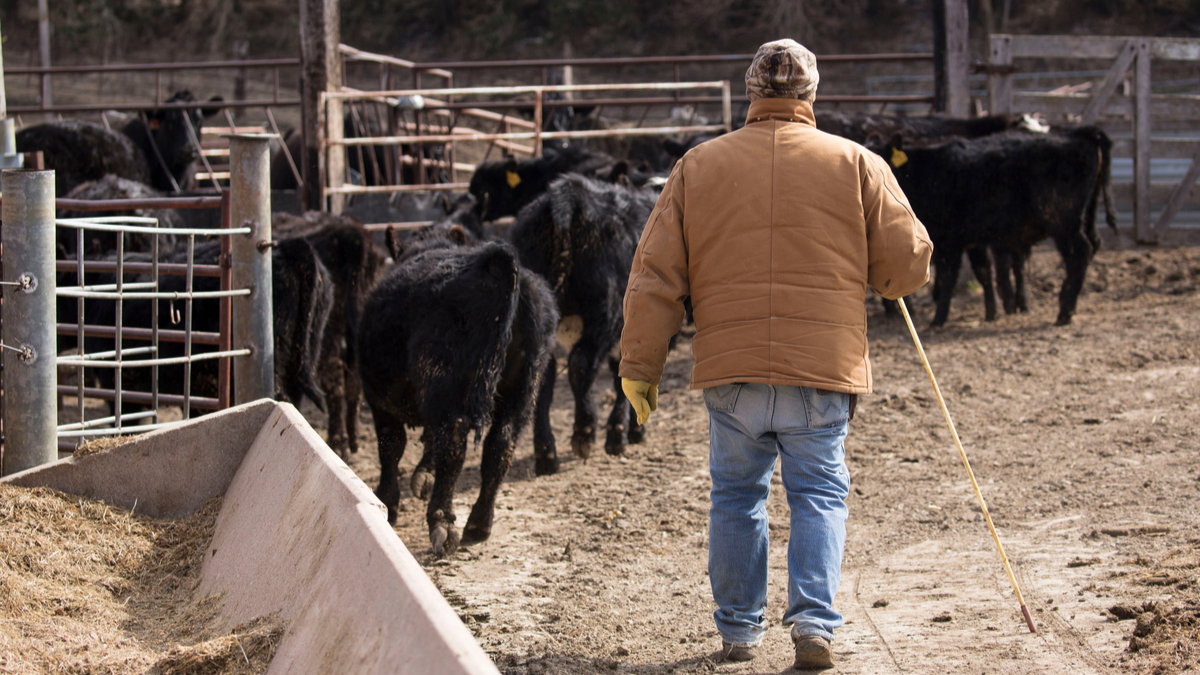How to solve the greatest challenge in the feed industry
Over the next few years, food production must almost double to meet the needs of the world population and the global demand for protein. This has put pressure on the livestock sector to maximize output while reducing the usage of resources, making animal feed the largest and most important component in the industry to provide healthy and sustainable animal protein.
One of the biggest challenges for the feed industry and animal nutrition is the rising cost of feed, which can account for up to 70% of total production expenses. Furthermore, around 25% of the available nutrients cannot be fully utilized by the animal due to anti-nutritional factors in the feed, which could be costly for the global livestock industry.
Today, the greatest challenge for the nutritionist in the feed industry is reducing this indigestible fraction and maximizing feed efficiency based on nutritional and economic factors, which often vary and may be unique to each production system.
Improving animal and feed performance with feed innovation
Scientific innovation is critical for the future of animal nutrition and protein production. Some key areas of focus for the global animal feed industry to improve animal and feed efficiency are:
- Improving animal performance characteristics (e.g., feed-to-weight-gain ratios, smart feed for more nutritious animal products)
- Minimizing costs (e.g., less expensive base ingredients, more efficient utilization of grain for feed)
- Maximizing feed production efficiencies in a sustainable way (e.g., processes and practices)
While traditional feedstuffs continue to be used at high rates, new and novel feedstuffs are now routinely implemented in animal feed formulation. A range of innovative applications are being used to optimize and assess the continued development of efficient and sustainable advances. Advanced technologies, such as nutrigenomics, reveal the relationship between feed nutrients and gene expression. Nutrigenomics allows the industry to identify feeds that can help animals reach their genetic potential by directly impacting the genes responsible for growth rate, meat quality and disease prevention.
Another technology that will allow for the prompt characterization of the nutritional value of raw feed materials is in vitro digestion modeling. These models, which can be used for both poultry and swine, provide real-time decision-making options to maximize feed usage while also improving animal production.
A third area of feed innovation involves providing supplemental feed that contains exogenous enzymes, also known as feed enzymes, which aid digestion by promoting the release of nutrients that are typically unavailable to the animal, improving animal performance in a sustainable way.
The role of enzymes in the feed industry
Enzymes, which are essential for life, serve a wide range of functions and are especially important to the feed industry, thanks to their ability to break down nutrients. Enzymes are naturally occurring catalysts that speed up the rate of most chemical reactions that take place within cells.
Enzymes play a key role in the animal’s digestive process. Although digestive enzymes are produced by the animal itself — or by naturally occurring microbial organisms in the animal’s digestive system — producers have also used exogenous feed enzymes for many years for nutrient utilization and improved performance in animal feed.
Using poultry nutrition as an example, feed substrates and enzymes can generally be thought of in three ways:
- Naturally produced endogenous poultry enzymes in the digestive tract of the bird for the liberation of nutrients from feed components, such as starches, proteins and lipids
- Exogenous enzymes not native to the animal’s digestive system that act on recalcitrant substrates, which are not easily digested but which could potentially be utilized as nutrients, such as the glucose in cellulose in poultry diets (e.g., use of cellulase enzyme in poultry nutrition)
- Exogenous enzymes not produced by the animal’s digestive system that could act on difficult-to-digest substrates, as well as any anti-nutritive effects, due to compounds such as β-glucans, xylans and phytate (e.g., phytase enzyme in poultry feed)
Performance and profitability are often the primary reasons for utilizing feed enzymes, as they are the direct result of the improved digestibility and the increased availability of nutrients like phosphorous, carbohydrates and amino acids and, in turn, an increase in available energy as well. However, feed enzymes also allow for the use of a broader range of feedstuffs, which can allow for flexibility in the formulation of the diet by using non-conventional sources or alternative raw materials. These alternative sources are a direct result of the growing demand for corn, wheat and soybean meal. The increased demand for grains has also increased their value, leading feed producers and nutritionists to look for alternative feedstuffs to reduce costs. Non-conventional dietary sources, however, might not be as readily digestible, as the animal may lack the necessary endogenous digestive enzymes and, as such, will glean less nutrition from the feed. The utilization of exogenous enzymes to make the feed more digestible increases the nutritional value of these non-conventional feed sources for the animal.
Over the past 20 years, enzyme supplementation in the animal feed sector has grown and developed dramatically. The global feed enzyme market is currently estimated to be more than US$1 billion and is expected to grow by another 8% over the next five years. Right now, phytase holds the largest market share; however, the use of proteases and NSP enzymes, such as xylanase, has accelerated to such an extent that they are being included in over 57% of monogastric diets. Enzymes in poultry feed has been the largest segment, followed by the swine and aquaculture industries.
Feed enzymes over the years
Early research studying the role of enzymes in poultry nutrition was already taking place in the 1920s. The R&D evolution continued through the 50s and 60s, when barley diets were commonly fed, and research showed that enzymes improved poultry performance. During the 80s and 90s, a better understanding of NSPs in fiber and their impact on animal performance became a focus of the research, and the use of xylanase also became prevalent. During the late 90s, the use of phytase became standard practice. Currently, in terms of the feed penetration of phytase and carbohydrase enzymes such as xylanase, the feed enzyme sector is a mature market. The benefits of providing exogenous enzymes in the feed include the reduction of anti-nutritional factors in the animal feed, the use of lower-cost feed ingredients and an improvement in feed conversion and animal performance — but in order to get the most out of your animal nutrition, it is important that you choose the right feed enzyme to meet your needs.
A unique process development
The majority of feed enzyme production originates by using both bacterial and fungal microorganisms produced either from the submerged fermentation (SmF) or solid-state fermentation (SSF) processes.
Naturally occurring microbial strains for the production of enzymes are of great value and continue to be utilized, but the use of recombinant versions accounts for the majority of industrial enzyme production today.
Solid-state fermentation systems can be tailored to address specific needs based on the substrate and microbial selection. For example, Aspergillus niger produces a cocktail of enzymes that contain multi-enzymes such as phytase, xylanase, cellulase, protease and β-glucanase. These enzymes, both as individual applications or as a concoction of enzymes, have a broad spectrum of industrial applications.
Early assessments characterized SSF as being a simplistic process, less technologically advanced than the SmF process, but that assessment was later shown to be erroneous and based on a poor understanding of SSF process requirements. Recent rigorous studies have shown that, with the proper design, the technical and economic advantages of SSF far outweigh those of SmF. The many economic advantages of SSF over SmF include a lower capital investment, lower energy requirements, a lower environmental impact based on water consumption and waste generation, and lower costs for downstream processing. Additional studies are needed to continue identifying opportunities for agro-industrial residues as substrates and to match the appropriate microbes to cultivation conditions. Tray fermentation has become the proven leader in large-scale SSF applications, and much work has been completed on the control of key parameters to optimize growth at a commercial scale. Innovations in engineering to allow for large-scale SSF processes offer a major opportunity for growth in the commercial enzyme industry.
Maximizing feed efficiency with enzyme technologies
Enzymes are well-known to be an effective solution for optimizing feed efficiency. Enzyme supplementation in animal diets increases nutrient digestion by breaking down anti-nutritive components, such as phytate and NSPs, into forms that are more readily absorbed by the animal, reducing the environmental impact as well, while saving on costs for producers.
Feed efficiency starts with an accurate knowledge of raw materials and their quality, allowing for the precise adjustment of the feed formulation. How well an enzyme performs, in many cases, is determined before it even reaches the animal. Feed processing methods — whether milling, grinding or, particularly, pelleting — can have a major impact on enzyme stability. Furthermore, digestive tract conditions, particularly pH changes and substrate availability, can also influence enzyme efficiency.
Enzyme characteristics can vary widely depending on the source. Solid-state fermentation has the potential to offer competitive advantages based on cost and efficacy.
Click here for more information about the Alltech Enzyme Management Program.

Food production is required to almost double to meet the needs of the world population and the global demand for protein, putting pressure on the livestock sector to maximize output while reducing the usage of resources. This will make animal feed the largest and most important component in the industry to provide healthy and sustainable animal protein.

























